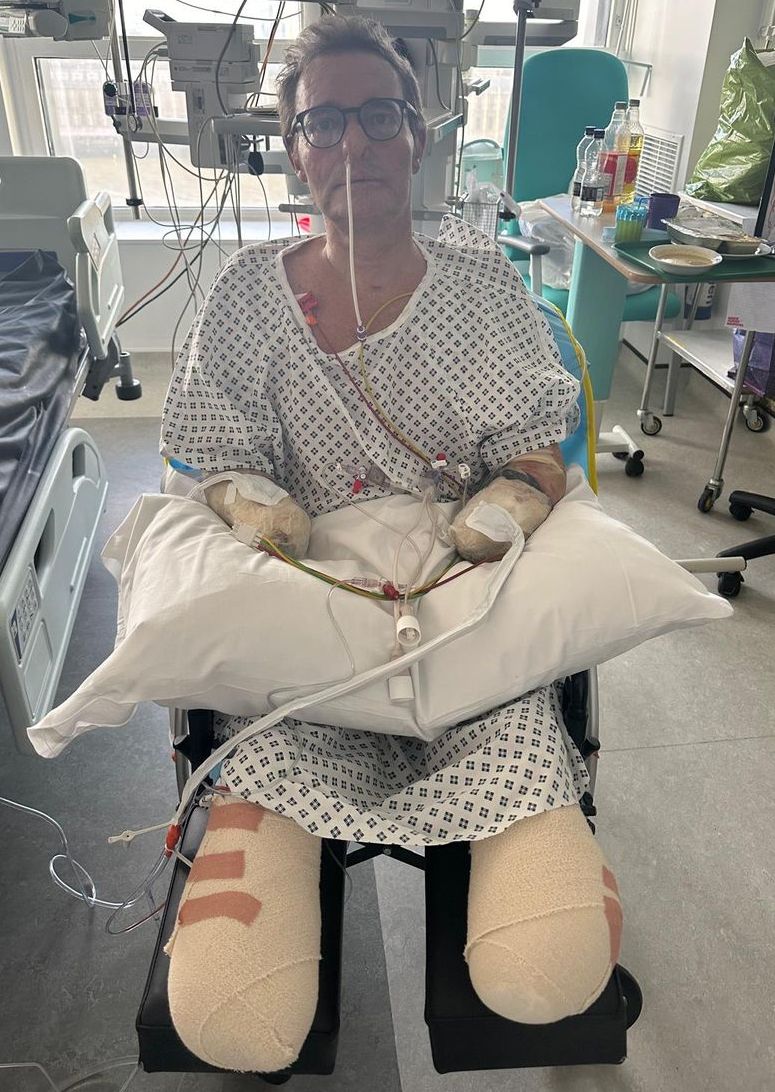In the middle of the first lockdown, Hollie Smith was a bright-eyed teenager, ready to go to university.
But instead of entering higher education, she spent a large portion of that year hospitalised and on her own, without family members allowed in the hospital during the pandemic.
After getting a urinary tract infection, Smith had called 111 and was told she might have a kidney stone. She went to hospital and was soon discharged — only to have a seizure on the way to the exit.
She actually had sepsis, a serious blood infection that began a five-year journey which would put her in a coma, cause multiple seizures and lead her to eventually need a wheelchair.

Hollie Smith before she fell ill with sepsis
“I was a healthy, fit, sporty, academic 18-year-old. I would never have ever thought that this would be my life like five years down the line,” Smith, now 23, said.
Estimates from the World Health Organisation (WHO) suggest that one in five deaths worldwide are due to sepsis. And, according to Dr Ron Daniels from the UK Sepsis Trust, sepsis cases are now on the rise globally due to ageing populations, antimicrobial resistance and changing definitions of the infection.
• What causes sepsis — and are cases on the rise?
Yet in Britain there is no national database for cases of sepsis. “Unlike for conditions such as stroke, kidney failure, heart attack, there is no national database and no national disease registry for people with sepsis or severe infection,” Daniels said. The charity has estimated from hospital admission figures that sepsis is responsible for 48,000 deaths each year and 11 million deaths globally — more deaths, it said, than cancer.
Because of the lack of a database, it is hard to study why sepsis progresses rapidly in some cases — like the MP Craig MacKinlay who underwent a quadruple amputation — and extremely slowly in others, like in the teenager Martha Mills and Smith. It can also make it hard for specialists to study which antibiotics work best for each case, making treatment more difficult.

The MP Craig MacKinlay in hospital after his quadruple amputation in 2023
BBC
According to Daniels, sepsis care had been improving in the UK before the pandemic, with a national plan in place. But since then, the progress has stalled. “We have gone backwards, and NHS England have not produced an updated National Action Plan since 2017,” he said. ”So [we’ve] really stagnated for a number of years.”
“We are calling not only for a new national action plan, but also, we need to deliver the very best sepsis care, given that it’s physically interlinked with antimicrobial resistance,” Daniels added.
• ‘Breakthrough’ blood test for sepsis to save lives
In Smith’s case, she believes medics initially thought she had a bad infection. With the hospital in lockdown, the team tried to discharge her soon after admission. On her way out to meet her dad, she had her first seizure.
“Then it was seizure after seizure. And then I had a massive seizure in the middle of August — I stopped breathing. And when I came round, I’d lost the use of my right side completely,” she said.
She was back in hospital at the end of the year, having gone into septic shock after a second infection. For Smith, the medical teams around her saved her life multiple times — putting her in a coma and giving her life-saving antibiotics when she needed them.
But the sepsis is sometimes not considered to be a possibility when it should be, Smith said. While it’s more common in older adults and very small children, “it can happen to anyone”, she added.
“It’s completely indiscriminate, and sometimes it can happen so quickly that you don’t know it’s happening. So you just need to ask, could it be sepsis?” she said.
An NHS spokesman said: “The NHS is working with a range of stakeholders including the Sepsis Trust to develop a new framework to reduce the number of deaths and serious illnesses that result from sepsis. This will sit alongside the early warning systems that have been rolled out to improve recognition and response for all causes of deterioration, including sepsis.
“The introduction of Martha’s Rule across all hospitals is helping patients and their families alert staff to subtle changes in how patients are feeling — potentially identifying early signs of deterioration — while giving them the right to call for an urgent review if they remain concerned about a patient getting worse.”

